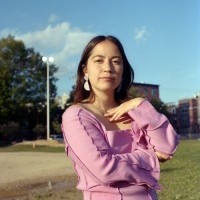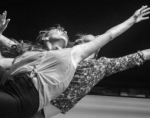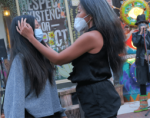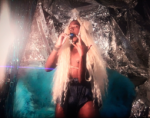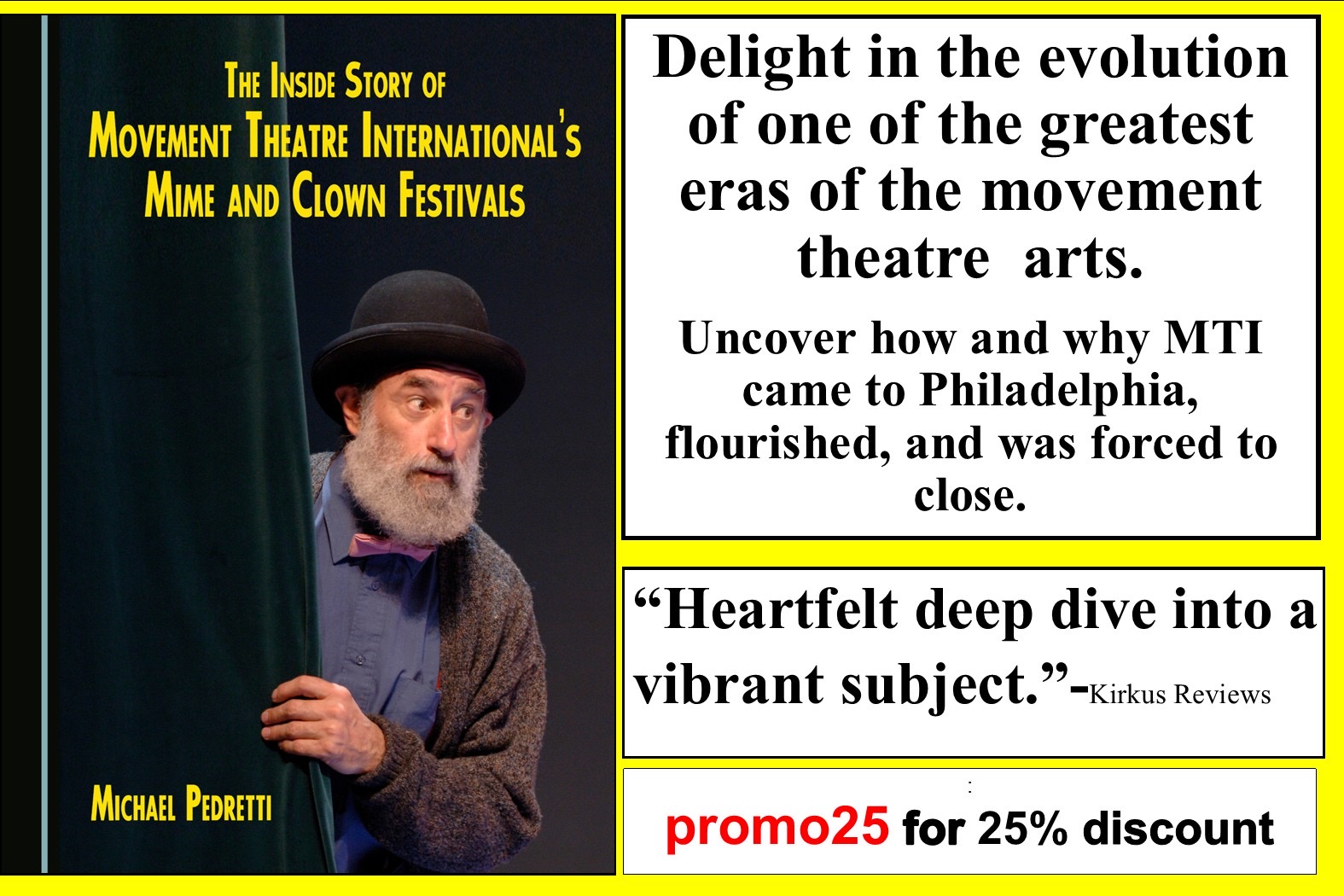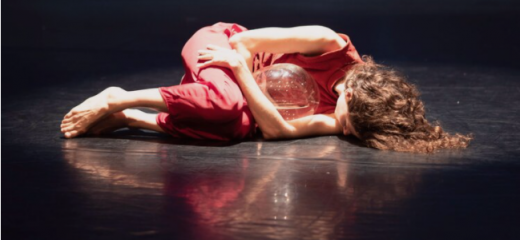
On Community and Access in Somatics: An Interview with Marion Ramirez of caracola
by Maddie Hopfield
Founded by Marion Ramirez* in 2020, caracola is an online movement platform that offers classes in somatics, contact improvisation, and other movement-based forms for both adults and children. Classes are taught in English and Spanish by Marion Ramirez, with some classes co-taught by Jungwoong Kim in Korean and with some with assistance from Ari Kim-Ramirez.
Maddie Hopfield: My first question is about the word “nutritious.” You use that word a lot to describe somatic movement. Can you talk more about that?
Marion Ramirez: I started with my class “nutritious contact” and this idea that touch is food: good touch, welcome touch. It brings oxygen to every cell. It’s like medicine. I consulted one of my dance teachers, Nana Hudo, and she said, “Nutritious sounds like a smoothie to me.” She suggested nurturing or nourishing, but I feel those words have been used so much in parenting workshops and things like that. I said no, I want it fresh, like when you open a mango. It's really alive.
MH: You mentioned that you dedicated October’s classes to Nana Hudo, can you speak more about that?
MR: I’m calling it Guiding Voices. Every month, I am dedicating my classes to an elder who has had a big impact in my life. Often institutions or people with the highest university degrees are the ones that get credit for forming teachers. And while yes, those teachings are fundamental for students or for myself, the threads that put together what I offer actually come from the people that cared for me, those that influenced my formation as a person; some are also dance teachers. The first month I dedicated to my grandmother. She died at almost 109 years old when the pandemic started. Her energy really filled me up even when she passed. It has nothing to do with her teaching me anything related to dance, more of how to proceed in moments of difficulty.
It’s also about having a connection with these people and celebrating this passing of knowledge across generations. I've been having a lot of conversations by sharing the Guiding Voices on social media, and a lot of people that know them are putting comments and sharing memories. It's reaching out into the community in a way that goes beyond the classes and circling these influences more intentionally back into the current curriculum I share in caracola. Nana Hudo, who is 80, being able to join in on the improvisation sessions with me and my current students is so special.
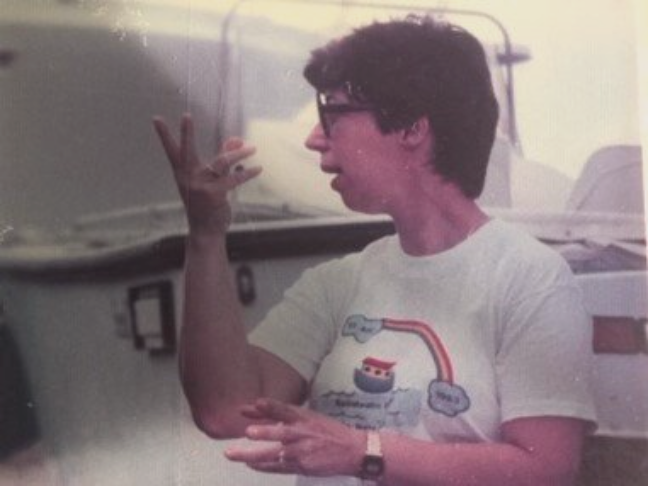
Photo of Nana Hudo, one of Marion's Guiding Voices.
MH: There’s this idea about somatics—that it's always about just reaching in and feeling what you're feeling—but I love that it can be about reaching into the past or reaching out to the present community through another person.
MR: But the reaching out and the reaching in go together, you know? I have to go deeper in to find that strength. I realized I can connect with someone that has passed, but is still alive within me. We can unite forces that way.
The elders are so isolated at this time. Many of them cannot take the risks we take; some of them are not going out at all. I’m finding little opportunities to honor them and let them know that what they have done in their life matters, and it's still going on through the people they touch.
MH: One of the other things that I was really interested in when taking your classes was that they were taught in Spanish and English. That's not an experience I have too much in the dance classes I take.
MR: Often the somatic movement world may feel exclusive to people that understand a particular kind of language or have access to specific kinds of education, when in fact some of this work is highly influenced by and has parallels with Indigenous practices and knowledge, ancient cultures, and Eastern philosophy.
When I finally graduated from my somatics program, Dynamic Embodiment™ with Martha Eddy, which has a strong focus on social somatics, I felt empowered to form my own particular synthesis of what I was studying. I wanted to make it accessible to Puerto Rican people—and people from the Latinx community that are very interested in experiencing somatic movement but often feel intimidated by going into classes that seem highly dominated by white culture and not inclusive to their cultural contexts.
With Spanish being the second most-spoken language in this country, I feel that people who don’t know it should learn it and be comfortable listening to it. I have felt the lack of patience and the layers of racism people carry with them that they don't even know. They hear another language and without thinking are making fun of you.
So if I'm guiding the practice, I will have people wait. I want them to wait and not be in a rush to understand things so quickly. It’s important to have the experience of letting the body absorb it, absorbing the melody, and then to start making connections. Over time, they may learn some of the language, or start recognizing some phrases. It's helpful for everybody to hear it in a context in which you're relaxing, and not on high alert.
MH: That was my experience as someone who doesn't speak Spanish and isn't often in a space where there's a lot of translating going on: absorbing it with my body, picking up on little bits.
MR: Over the years, there have been so many times where I’m speaking in English and change to Spanish and there is a man listening that either sexualizes what I say or starts making fun of it, or tries to say whatever they know in Spanish—just to flirt with me. They're not listening to what I'm saying. In my studio, I don’t give any space for that. By having the two languages next to each other, there's no space for anybody to make fun of either. It feels like a healing process for myself, too.
MH: That's really beautiful. I love the different layers of healing that are embedded in the structure. What do you see in the future for this project?
MR: Currently I'm offering monthly somatic movement therapy privates, somatic improvisation for individuals and small groups, and Nutritious Contact for couples and parents. I am balancing this with the teaching work I do at Temple University. My dream is to teach caracola classes everyday, and have it sustain our family. It is a risk. I'm willing to take it as the future unfolds. Each class does come from a home experience: I co-teach with each of my family members, including my children.
I wish to continue offering accessible classes at a sliding scale. In the future I want to do lessons in person, at people’s homes, community centers, and universities; train students to become caracola teachers and expand possibilities with future educators; host more collaborations as I keep learning from other professionals in the fields of music therapy, art therapy, and somatic psychology. One day, I hope to formalize the family dance curriculum and create video materials as well as intensive workshops to share with parents, caregivers, children, and educators interested in movement. And I hope to find resources that allow me to continue to collaborate and connect with the Puerto Rican and Latinx communities.
*Ramirez has been a guest writer for thINKingDANCE.
Homepage image: Marion Ramirez & Jungwoong Kim facing the camera.
Article image: Marion Ramirez performing onstage.
Interview with Marion Ramirez of caracola, conducted via Zoom, October 12.
By Maddie Hopfield
December 3, 2020

